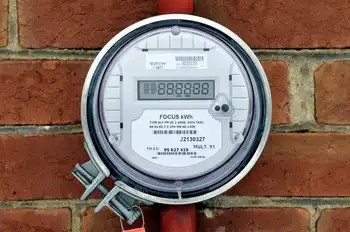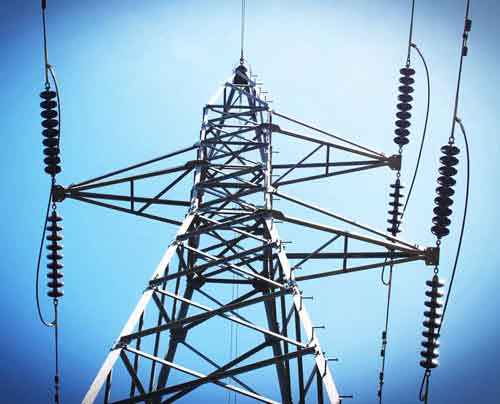Power: Cutting cord clutter
By Appliance Design
NFPA 70e Training
Our customized live online or in‑person group training can be delivered to your staff at your location.

- Live Online
- 6 hours Instructor-led
- Group Training Available
Throughout the ensuing years, advancements came slowly. Now, it looks as if that promise is coming closer to reality and the timing could not be better.
With the millions of portable devices in use, and the chargers and cords that bring them power, todayÂ’s wall outlets have become more clogged and countertops more cluttered. And, that doesnÂ’t even take into account the plethora of small appliances and other electronic devices that need to be plugged into a power source, which might benefit from wireless power transfer.
Conceptually, wireless power transfer involves the embedding of a line-connected power transmitter into a fixed or movable surface, which then transmits power to a device within a certain proximity without the need for any cord between the transmitting or receiving device. In practice, it may mean embedding the power transmitter into a wall, floor, countertop, or a portable mat that can be placed on any flat surface, such as a table, countertop, or nightstand. An appropriately designed device would then receive its power from the transmitter after being placed near or on the transmitting surface.
Such an arrangement might be used to power devices directly, but the initial focus of the technology is directed at the creation of smart, universal charging pads, capable of recognizing and recharging multiple rechargeable devices, eliminating the need to have a dedicated charger for each device. Demonstrations of both direct powering and recharging concepts were on display at this yearÂ’s Consumer Electronics Show, held in January in Las Vegas.
At least two companies displayed the direct-powering concept. Fulton Innovation, Ada, Mich., displayed a blender powered by its eCoupled technology that was embedded in a countertop. The blender had no cord; all the power came through the surface of the counter. And, WiTricity, Watertown, Mass., wirelessly powered a large-screen TV and DVD player, a laptop, and a video projector with its through-the-air transfer method.
The best-known example of wireless power transfer is the electric toothbrushes found in many homes. These toothbrushes use inductive coupling, which utilizes a primary coil in its charging base to generate an inductive field. The toothbrush itself contains a matched secondary coil. When the toothbrush is placed in the charger, the inductive field induces current into the secondary coil in the toothbrush and this power is passed on to the rechargeable battery in the toothbrush. In the toothbrush example, the goal is to create a sealed unit and eliminate exposed electrical contacts in a potentially wet environment, since an electric toothbrush typically sits near a sink.
The new twist on such technologies is the use of microprocessors and control programs that enable sophisticated monitoring and management of the process.
There are three basic approaches to wireless power transfer. In near-field or close-proximity applications, where the electronic device is situated close to the charging apparatus, companies have developed inductive and conductive technologies. In the third method, broadcast, a transmitter sends RF energy through the air to the receiving device, permitting a greater degree of separation between the two.
With wireless power transfer, there is generally a tradeoff between distance and efficiency. If the distance between the transmitter and receiver is small, transfer efficiency will be high. Efficiency levels drop if power is sent over a distance of just a few feet, especially if the distance is greater than the diameter of the transmitting and receiving coils. As the distance expands, more of the transmitted power dissipates into space.
This is true even for systems that have developed methods to better target power transmission. A near-field inductive coupling charging system can achieve power efficiency of around 100 percent, while a highly efficient broadcast system can generally do no better than about 75 to 80 percent efficiency. (This assumes that the two coils are not right next to each other when the power is transferred, which would improve transfer efficiency.)
Not only is inductive charging almost totally efficient, it is also the most developed of wireless technologies. Like the toothbrush example, the method uses two coils, one in the transmitting device, and one in the receiving device. To begin charging, an electric current runs through the emitting coil to induce a current in the nearby receiving coil.
Fulton Innovation, developers of eCoupled Intelligent Wireless Technology, is one of the more mature technologies and has been one of the most successful developers and marketers of wireless power transfer using inductive coupling. The technology has been used in some 1.5-million eSpring water purification units made by Fulton, and its use in other devices is growing. Some of FultonÂ’s technology licensing contracts include deals with Motorola, Visteon, and Herman Miller. Recently, it has contracted with Bosch, regarding the charging of power tools; Energizer, to develop commercial lighting products; and Texas Instruments, to develop integrated circuitry to support eCoupled technology.
FultonÂ’s technology uses adaptive inductive coupling. Embedded integrated circuits sense changes in the positioning of the primary, or transmitting coil, in relation to the secondary, or receiving coil to determine the best orientation for that configuration. A digital-control loop constantly monitors load requirements and responds to changes in power needs. This control allows for power transfer levels to be maintained even if the device moves several inches, up or down, or less than an inch off of the transmitter surface.
The technology can simultaneously charge multiple devices, and at the same rate as would be possible with the deviceÂ’s original charger. When an eCoupled-enabled device is placed on a mat or other surface embedded with a power transmitter, the system determines the power requirements for that particular device and supplies the requisite power to that section. Another device with a different power requirement would need to be placed on another sector of the charging surface. If the device is not compatible, the system automatically goes into sleep mode and awakens when a compatible device is present.
Dave Baarman, director of advanced technologies for Fulton Innovation, says that the system can deliver power loads ranging from milliwatts to kilowatts. It is used for everything from low-power applications such as a hearing aid on up to a 1-HP blender. The blender, which was showcased at CES, illustrated the companyÂ’s ability to directly power an electrical device as opposed to recharging batteries.
The challenge of this application, Baarman says, was the varying power load requirements of the blender and adjusting to them as they changed. For instance, if the blender had to crush ice and simultaneously blend a drink, the power requirement would change as the action goes from crushing ice to mixing the liquid. The power transmitting side of the arrangement would then provide more or less power as needed.
This direct power transfer capability may represent long-term opportunities for new product design. Imagine a whole suite of small appliances that could be powered simply by placing them on a countertop embedded with a power transmitter. The cordless devices would be easier to store and clean, and theoretically be more robust as they could be completely sealed against the elements.
Embedding power transmitters in tabletops and other surfaces is a goal for Israel-based Powermat. The company currently markets inductive charging systems using technology akin to that of Fulton Innovation.
Powermat uses a mat as the transmitting source and a magnetic induction coupling system to transfer power at more than 90 percent efficiency. The device uses a “receiver” unit, which is available as a case, dock, or power disc that can be embedded in a device.
The mats are also sectioned into areas where devices with the same power requirements can be simultaneously charged. Each charging port is an independent unit with standalone power management capabilities that recognize and charge a device. Before charging begins, RFID tags and a data authentication protocol establish a handshake between the mat and the receiver. A successful handshake triggers the energy transfer. If the mat does not recognize the device, it will not transfer power. Through constant monitoring, the system stops charging when the device is fully charged.
The mats can charge between three and six devices simultaneously, depending upon the model. Charging occurs at the same rate as if each device was using its own charging unit. For devices without a compatible receiver, the mats have a USB port for power transfer. The company has developed receiver units for popular electronics such as Apple iPhones, BlackBerrys, iPods, and various handheld games, and global positioning systems.
Mobile devices such as these can also be charged with new technology from WildCharge, Scottsdale, Ariz. While the WildCharge technology also employs a mat as a transfer device, a different transfer method is used as compared to FultonÂ’s or PowermatÂ’s.
WildChargeÂ’s method is based on conductivity, and not inductive coupling. The mat has a conductive surface, is flat and thin, available in rigid or flexible materials, and can be placed on any flat surface. The conductive connection is made through contact points on the back of an electronic device, says Izhar Matzkevich, founder of WildCharge. Enabled devices have four, spring-loaded ball bearings that come in contact with the surface and complete an electrical circuit. The unit can transmit and receive up to 15 W of power, and the pads come in 15 V and 20 V versions.
The company sells adapters with built-in contact points for specific electronic devices. The adapter for the RAZR phone, for example, is a direct drop in that replaces the phoneÂ’s original battery cover with one that has built-in WildCharge capability. In addition to RAZR, the company has released adapters for the Apple iPhone, iPod touch, the BlackBerry Pearl and 8800, and other devices. Alternatively, it can help OEMs design-in contact points into new products.
One of the newer applications for the technology are power kits for video game controllers from Griffin International, Minneapolis. The controllers are used with NintendoÂ’s Wii, SonyÂ’s Playstation 3, and the Microsoft Xbox 360 game systems. The kits can simultaneously charge multiple game controllers, along with other WildCharge-enabled electronic devices.
Another approach to wireless power transfer, broadcasting RF energy, is employed by Powercast, Pittsburgh, whose system can be used to charge multiple products. A transmitter, called the Powercaster, runs on line power and emits RF at a predefined frequency. The receiver, called the Powerharvester, can harvest tens of milliwatts from radio waves at an efficiency of 70 percent and at a distance of several meters. The Powerharvester captures the radio waves and converts them into DC energy. The receiver can also capture ambient power.
The Powercast system transfers low-power RF energy to devices, batteries, or capacitors that need between 1 mW and 50 mW of power. Charge can be maintained at or near the desired voltage through continuous or periodic charging. By coupling RF harvesting with batteries or capacitors, it can deliver watts of power on demand.
The system is available in a variety of transmitter and receiver module frequency ranges, voltage requirements, and form factors. To integrate the technology into an existing product design, only the power circuit typically needs to be modified to accommodate the Powerharvester module, says Steve Day, development manager for Powercast. Some customers have placed the circuit in the deviceÂ’s battery compartment, he adds. The receiving antenna can be molded into the device.
The company has developed products at a rapid pace. In 2007, for the Christmas season, the company debuted a Christmas tree with wirelessly powered LEDs. By 2008, Powercast completed more than 20 projects spanning the range of RF wireless power possibilities, including near field, far field, and ambient power harvesting. In doing so, they discovered that while near field represented an initial business opportunity, the ease of entry into that market segment would “marginalize their technological advantages,” says Day.
Instead, Powercast has chosen to focus on far-field powering, in the form of low-power, wireless sensor networks that can be deployed in networks of tens to hundreds of units, he says. At the 2009 CES, they displayed this idea with a hotel room concept. This application combined recharging of multiple, dissimilar remote-control devices and demonstrated how they can work with wireless sensor networks to automate a hotel room.
To make integration easier, the company has packaged its technology into a Lifetime Power Evaluation and Development Kit. The kit features the Powerharvester Module and the Powercaster Module and is meant to provide developers with all the tools they need to “design-in” the RF wireless power technology into their products, says Day. With the kit, a designer or engineer can self-discover RF wireless power, and because of the boards included, designers can even complete rapid prototyping with the technology. This is meant to stimulate an entirely new wave of differentiated electronics, he says.
Other companies are looking to stimulate this potential new market through wireless power transfer technology that combines the long distance benefits of the broadcast method with the higher power capabilities of inductive coupling. In 2008, a group at the Massachusetts Institute of Technology, and a separate group at Intel, demonstrated prototype wireless power transfer technologies that use inductive resonant coupling. The technology is meant for near-field, mid-field, and far-field applications. The theory of resonant coupling is that two coils resonating at the same frequency tend to exchange energy efficiently, while interacting weakly with other fields tuned to different resonances. To efficiently transfer the energy, the technology relies on strongly coupled resonators.
Marin Soljacic, associate professor of physics at MIT, has overseen the institutionÂ’s work in this area. When developing this idea, Soljacic theorized that if close-range induction coupling was efficient in transferring power, than it might be possible to transfer energy over longer distances. In June, Soljacic and his colleagues demonstrated the technology using two, 60-cm copper coils, which were designed to resonate together at 10MHz and were oriented along the same axis. By running current through the transmitting coil, an electromagnetic field was generated. The field crossed 7 ft. to the second coil, which converted the energy into electricity. With this power, they were able to light a 60 W bulb.
However, the efficiency of the transfer was not great. At a distance of 7 ft., the power efficiency was about 45 percent. By reducing the distance to about 3 ft., energy transfer neared 80 percent. Most of the energy that did not transfer was reabsorbed by the transmitting coil.
The technology has been spun off into WiTricity, which is currently working with OEMs to develop products based on SoljacicÂ’s work. WiTricity has designed systems that can transfer power at distances several times the diameter of the coils, says David Schatz, director of business development and marketing.
The system can transfer power from milliwatts to kilowatts. As with the RF broadcast systems, efficiency varies by distance. If the coils are separated by half a meter, the efficiency can approach 90 percent, says Schatz. In the field, that number may drop sharply. Movement of the receiving unit can also add to the challenge, but Schatz says that the resonant technology helps to better direct the magnetic fields.
The amount of power that can be broadcast was evident by the number of devices that were directly powered during CES. Schatz says that the WiTricity technology can be embedded into a variety of products and systems. He says that the physics of resonant inductive coupling enables WiTricity engineers to design power sources and devices of varying shapes and sizes, to match both the packaging requirements and the power transfer requirements for a given OEM application.
Intel is using the resonant coupling technology to develop products under its Wireless Energy Resonant Link (WERL) program. Joshua Smith, an Intel researcher and senior application engineer, says the goal is to develop a product to efficiently transfer tens of watts or power with variable geometry between the transmitter and receiver.
In August, the company demonstrated the use of a resonant inductive field to light a 60 W bulb from about 3 ft. It lost about 25 percent of the power in the transmission. The coil size was about 12 in., which Smith says is a size that could fit into the lid of a laptop computer. For smaller electronics, the antennas would also need to be smaller, and receivers are under development for various applications.
IntelÂ’s chief technology officer, Justin Rattner, has said that the technology could be embedded in tables and work surfaces so that they can start to charge when an appliance is brought into a room or if it is put down on an appropriately equipped device.
While this broadcast technology continues its advancement, and new products begin to enter the market, broadcast technology still faces hurdles for larger implementation. These issues include efficiency, electromagnetic interference, and safety. Some of these concerns are more perception than reality, but either way, the suppliers have devoted many resources to them.
Efficiency is critical for through-the-air power transfer. With even the best technology topping out at between 70 and 80 percent efficiency, the issue could impede greater usage as some consider the downside of energy waste not worth the convenience factor of eliminating a power cord. While work continues to improve transfer efficiency, it is not certain how much improvement can be made to overcome the inherent difficulties caused by distance. On the other hand, in some applications the ability to charge from a distance is more important than losing a percentage of power during transfer. A soldier recharging a field radio, for example, might not care that only 50 percent of the power is actually making it to the device.
Another crucial concern for broadcast technology is to ensure that the energy being broadcast does not harm either people or other electronic devices that come between the transmitter and receiver, an issue that the more direct contact technologies do not have to face.
According to Schatz and others, the fields that are transmitted fall well within regulatory guidelines and emissions will not interfere with other electronic devices. Having said that, Smith says that he can foresee some cases where certain components within a device may require shielding. He anticipates that that would be no greater than the shielding that is commonly used in many electronic devices.
The energy transmitted is not considered a safety hazard, according to the suppliers. Powercast, for instance, says that the RF energy that its units transmit is less than those encountered during every day life. In terms of resonant inductive coupling, Smith says that the coupled magnetic fields that are transmitted are safer than electric fields. Electric fields interact with the water in a personÂ’s body, which magnetic fields do not do. The reasoning is that the H20 molecule is a polar molecule with an electrically positive end and an electrically negative end, according to Intel. A water molecule within an electric field will tend to align with the field and when the field is oscillated, the water molecule will oscillate as well. This is how a microwave oven pops popcorn. Magnetic fields, on the other hand, go relatively unnoticed by water molecules or any other molecule in a body. Despite this, Smith says that consumers will almost certainly question the safety of the technology and these questions will need to be answered.
Despite these issues, the developers of broadcast wireless power transfer technologies, along with developers of the other methods, are all enthusiastic about future prospects. The cell phone industry alone, with its more than 1 billion units sold, is enticing. And, the ability to make the consumers life simpler and less cluttered might make wireless power transfer the next hot concept that captures the consumerÂ’s attention.











